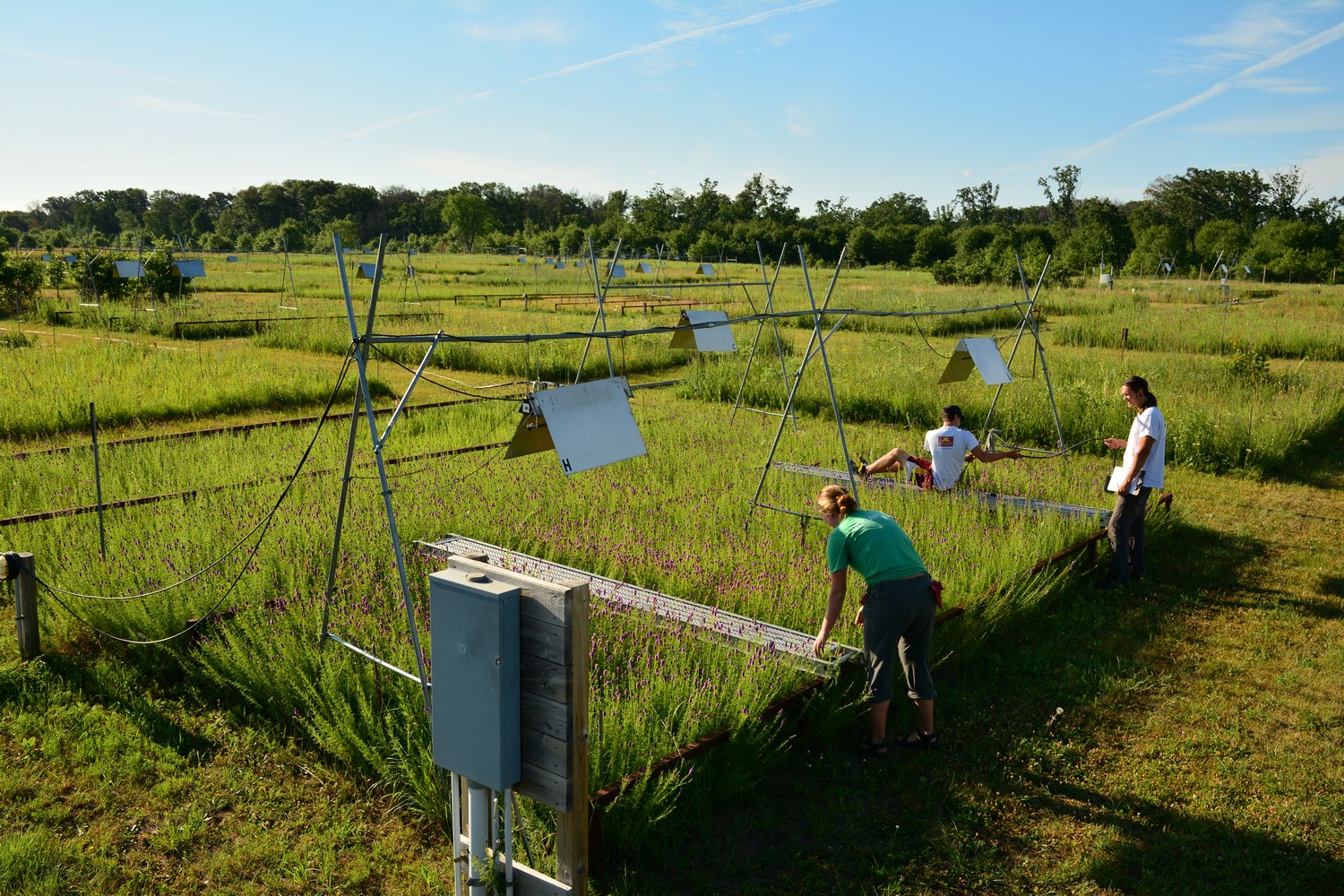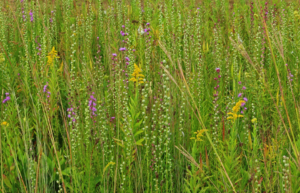
Experimental plots at CDR LTER.
Credit: CDR LTER
Farmers have known for centuries that fertilizer and irrigation help boost crop growth. But how does long-term application of fertilizer and water affect the composition of surrounding plant communities? In a study based at the Cedar Creek LTER, early signs suggest that added water and nutrients support the survival of new species and encourage more biodiverse plant communities — but as experiments continue, this effect is short lived and plant communities become significantly less diverse.
Distinguishing between such short and long term effects is one of the main purposes of the National Science Foundation’s Long Term Ecological Research Network. Habitats with higher species diversity and ecosystem function diversity are more productive, stable, and resilient — and better support plants, wildlife, and people. So, it makes a big difference whether our agricultural practices drive an increase or decrease in plant community diversity in the long run.
“Basically, our results show that future plant communities will likely be vastly different than those we currently have.” says Kaitlin Kimmel, lead researcher and doctoral student at University of Minnesota. “In the long term, scientists, farmers, and land managers will all need to adjust to these new communities, especially in regions where these types of pressures [fertilizer use and irrigation] may be prevalent.”
Kimmel and her team used ten years of grassland plot experiments to test how different combinations of nitrogen fertilizer application and irrigation affected the structure of a 32-plant community over time. By using different measures of plant community structure and looking for different types of change, the team could begin to get a more comprehensive picture of the mechanisms at play. While different types of plants responded differently to fertilizer versus water abundance, the overall response was similar. Credit: CDR LTER
Kimmel found that a rapid increase in the number of species in a plot in the first year could be an early indicator of long term biodiversity loss. In other words, when researchers added water and/or nutrients, they created favorable conditions that allowed some plant species to increase their dominance, leading to the loss of other species and wider community change.
This finding is powerful for two reasons. First, this long running experiment enabled researchers to distinguish between short and long term changes occurring in plant communities. At a glance, increased biodiversity is a promising sign. In reality, it is short lived in grasslands, and may be a sign of impending plant community collapse. Second, if consistent across different systems, managers could use this early indicator to screen, plan for, and possibly prevent, impending changes to plant communities.
With most arable land on Earth currently under cultivation, and growing urgency surrounding biodiversity conservation, understanding this relationship has never been more important — or complex. Kimmel hopes her work will encourage more studies that compare plant community change within and across ecosystems. Expanding her own research is Kimmel’s next step towards this goal. “We are working on an analysis now to see if this result is consistent across other Cedar Creek studies. However, we need to extend these analyses beyond Cedar Creek and look at different types of chronic pressures.”
— Cheyenne Coxon
Source:
Kimmel, K., L. Dee, D. Tilman, I. Aubin, G. Boenisch, J. A. Catford, J. Kattge, and F. Isbell. 2019. Chronic fertilization and irrigation gradually and increasingly restructure grassland communities. Ecosphere 10(3):e02625. 10.1002/ecs2.2625











